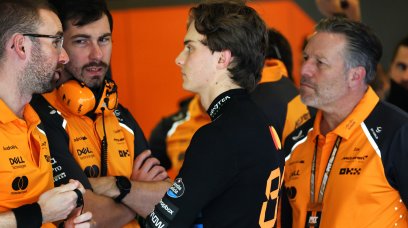Pirelli boss Mario Isola is optimistic that the new generation of Formula 1 tyres won't result in a lack of strategic variety amongst the teams, having previously admitted there is a possibility the 18-inch rubber could result in one-stop races becoming the norm . Speaking at the launch of Pirelli's 2022 motorsport programme, Isola said the aim with the development of the new tyres was still to allow for multiple stop races. "I hope not," he told media, including RacingNews365.com , when asked about the possibility of races being one-stop in 2022. "I hope we don't have less strategic variabilities, because the idea, and the way in which we have designed the tyres, is to continue to have different strategies – a mix of one and two stops." But Isola explained that one-stop races could be an unforeseen drawback of the new design. "It is also true that with a new product with less degradation, it is possible that we have less pit stops, so we have [the] majority of the races [as a] one-stop," he explained. "As I always say, for me, it is not an issue, as long as we have good races and action on track. When overtakes are too easy, it's not good. "So if we have drivers that can push for overtakes, we have a lot of action. It's important that the driver is putting a lot of effort in trying to overtake – that is exactly what spectators want. "There is a survey made by F1 on that and the majority of feedback was that spectators don't want easy overtaking – they want action on track and fighting."
How Pirelli developed the 2022 tyres
With Pirelli having to develop the 2022 18-inch tyres without the benefit of a 2022-spec car available to them, Isola explained the difficulty of having to rely on computer simulation data alongside the team's supplied mule cars for track testing. "I would say that is quite a normal situation," he said. "In 2016, we had to develop wider tyres for 2017, and no 2017 cars were available. So it is something that is not new to us. "What we do is, we have a great cooperation with the teams – they supply simulations. We did a lot of work with simulation in 2016, 2020 and 2021. "So we have a virtual model of the tyre. That is a black box that we provide to the teams; the teams can plug in this model in their simulators and give us their feedback. "So they have an model of the car, we have a model of the tyre, we have some iterations, and we converge to an idea of the final version of the car and the final version of the tyres." Isola then pointed out how Pirelli having access to data from all the teams allowed them to spot whether any of the teams were heading down the wrong path during the mule car tests. "Compared to the teams, we have an advantage that we have 10 teams that are supplying simulations, so we can compare the teams and see if there is somebody that is out of the ballpark," he said. "But [I won't say] it isn't difficult because, without a representative car, it's really difficult. But we have some tools and, thanks to Formula 1, we had the opportunity to develop these tools."
Most read








